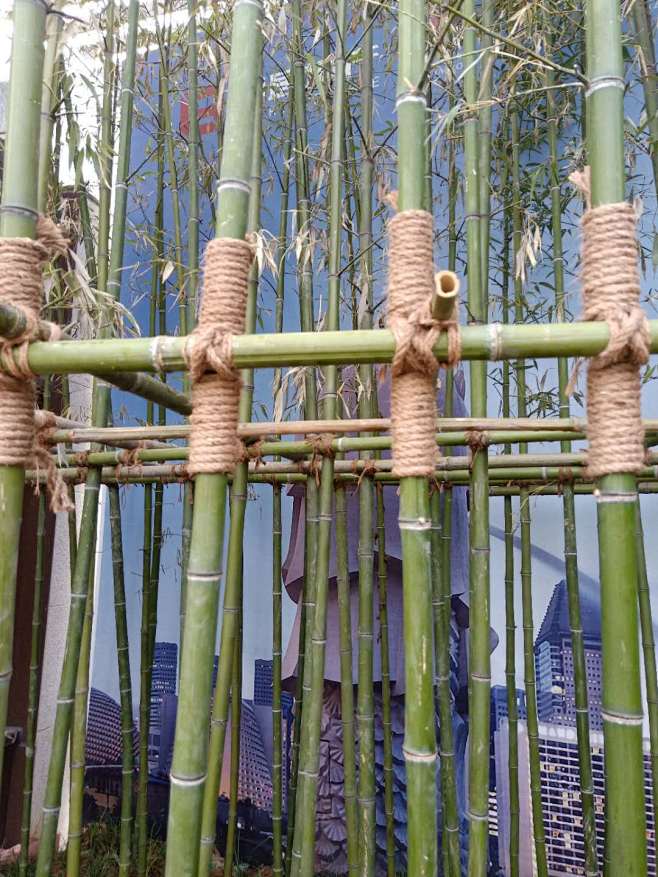A Step-by-Step Guide on How to Tie Bamboo Stakes Together for Stronger Garden Structures
Bamboo stakes are a gardener's best friend when it comes to supporting plants, creating trellises, or building simple garden structures. However, knowing how to tie bamboo stakes together properly is crucial to ensure stability and longevity. In this guide, we'll explore the best methods to securely tie bamboo stakes using various techniques and materials, so you can create sturdy supports for your garden. Whether you are a seasoned gardener or a beginner, this article will help you learn the skills you need to enhance your gardening projects.

Materials Needed for Tying Bamboo Stakes
Before diving into the different methods of tying bamboo stakes, it's important to gather the right materials. Here are some of the most popular options:
- Garden Twine: Natural jute or synthetic twine is commonly used due to its flexibility and biodegradability.
- Zip Ties: These plastic ties are easy to use and provide a quick and secure fastening option.
- Wire: Ideal for more permanent structures, wire provides maximum strength but requires careful handling to avoid damage to plants.
Each material has its advantages depending on your specific needs, such as the type of plants you're supporting, the duration of use, and weather conditions.
Step-by-Step Methods on How to Tie Bamboo Stakes Together
Method 1: Using Garden Twine
- Cut the Twine: Measure and cut a length of twine that's about three times the distance between the two stakes you want to tie.
- Position the Stakes: Place the stakes in their desired position, crossing them if needed.
- Wrap the Twine Around the Stakes: Start by wrapping the twine around both stakes at the point where they intersect. Ensure the twine is snug but not too tight.
- Create a Figure Eight Pattern: Continue wrapping the twine in a figure-eight pattern to ensure maximum stability.
- Tie a Secure Knot: Finish by tying a secure knot, such as a square knot or a clove hitch, to prevent the twine from slipping.
Tip: Opt for natural jute twine if you're concerned about environmental impact, as it will naturally decompose over time.
Method 2: Using Zip Ties
- Select the Appropriate Zip Tie Size: Choose a zip tie size based on the thickness of the bamboo stakes.
- Position the Stakes: Arrange the bamboo stakes in their desired formation.
- Fasten the Zip Tie Around the Stakes: Wrap the zip tie around the stakes at the point where they intersect.
- Tighten the Zip Tie: Pull the zip tie until it's snug but not overly tight to avoid damaging the bamboo.
- Trim the Excess: Use scissors or a utility knife to cut off the excess length of the zip tie.
Pros: Zip ties are quick to use and provide a secure hold, especially in windy conditions.
Cons: They are not biodegradable and may need to be replaced periodically.
Method 3: Using Wire
- Choose the Right Wire: Select a garden wire that's coated to prevent rusting and minimize plant damage.
- Cut the Wire to Length: Measure and cut a length of wire that’s sufficient to wrap around the stakes multiple times.
- Wrap the Wire Around the Stakes: Begin by wrapping the wire around the stakes, creating a strong and secure connection.
- Twist the Wire Ends Together: Use pliers to twist the ends of the wire tightly together, ensuring the stakes are securely fastened.
- Bend the Ends Inward: Bend the twisted ends inward or tuck them into the bamboo to prevent injury or damage.
Note: Using wire is best for more permanent garden structures where a stronger hold is necessary.
Tips for Choosing the Right Tying Method for Your Needs
When deciding on the best method to tie bamboo stakes together, consider the following factors:
- Type of Plant: Delicate plants may benefit from softer materials like twine, while sturdier plants can handle wire or zip ties.
- Weather Conditions: In areas prone to high winds, zip ties or wire may provide a more secure hold.
- Structure Size: Larger structures may require the strength of wire, while smaller ones can do well with twine.
Common Mistakes to Avoid When Tying Bamboo Stakes
- Using Inappropriate Materials: For example, using thin twine for heavy plants or zip ties for biodegradable purposes.
- Incorrect Knotting Technique: Failing to secure the knot properly can cause the structure to collapse.
- Overtightening: This can damage the bamboo stakes or plants being supported.
By avoiding these mistakes, you can ensure that your bamboo stake structures remain sturdy and effective throughout the growing season.
Conclusion
Tying bamboo stakes together is a straightforward process that requires the right materials and techniques. Whether you opt for twine, zip ties, or wire, each method offers its own set of advantages. By following these step-by-step instructions, you can create sturdy and reliable garden supports tailored to your specific needs. Now that you're equipped with the know-how, it's time to put these tips into practice and enhance your garden's structure and support.

